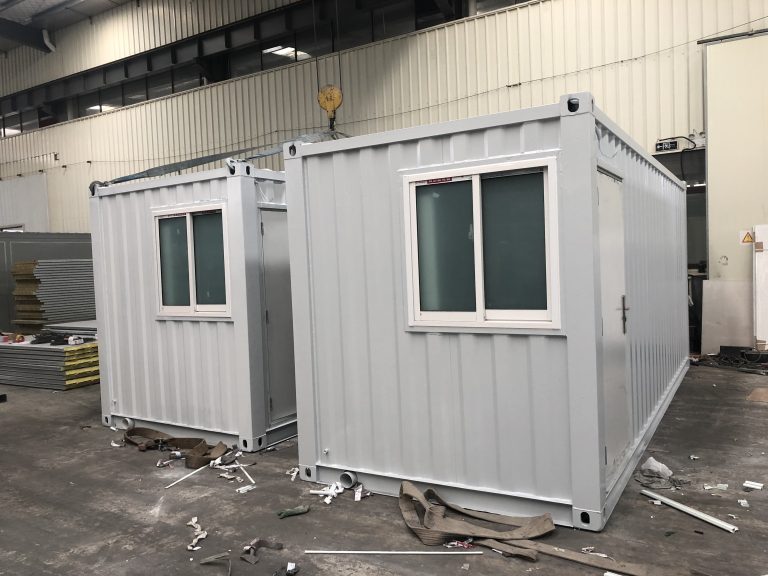Mixed structure design and construction of steel structure
Table of Contents
Benefits of Mixed Structure Design in Steel Construction
Mixed structure design in steel construction refers to the combination of different structural systems within a building to optimize its performance and efficiency. This approach involves integrating various types of steel structures, such as steel frames, trusses, and bracings, to create a hybrid system that takes advantage of the strengths of each component. By combining these elements strategically, engineers can achieve a more cost-effective and sustainable design that meets the specific requirements of a project.
One of the key benefits of mixed structure design is its ability to enhance the overall structural integrity of a building. By incorporating different types of steel structures, engineers can distribute loads more effectively and reduce the risk of structural failure. For example, a building may use steel frames to provide vertical support and bracings to resist lateral forces, creating a robust system that can withstand various types of loads and environmental conditions. This approach not only improves the safety and durability of a structure but also allows for greater design flexibility and customization.
Another advantage of mixed structure design is its potential to optimize the use of materials and resources. By combining different steel components, engineers can minimize the amount of steel required for a project while still achieving the desired level of performance. This can result in cost savings and reduced environmental impact, as less material is needed to construct a building. Additionally, the use of mixed structure design can lead to faster construction times and reduced labor costs, as the integration of different components can streamline the building process and improve overall efficiency.
Mixed structure design also offers benefits in terms of aesthetics and architectural flexibility. By combining different types of steel structures, engineers can create unique and visually appealing designs that stand out from traditional construction methods. This approach allows for greater creativity and innovation in building design, as architects can explore new possibilities and push the boundaries of what is possible with steel construction. Additionally, mixed structure design can help to optimize the use of space within a building, allowing for more efficient layouts and maximizing usable floor area.

In conclusion, mixed structure design offers a range of benefits for steel construction projects, including improved structural integrity, optimized use of materials, and enhanced architectural flexibility. By combining different types of steel structures within a building, engineers can create innovative and cost-effective designs that meet the specific requirements of a project. This approach not only improves the safety and durability of a structure but also allows for greater design flexibility and customization. Overall, mixed structure design represents a promising approach to steel construction that can help to drive innovation and sustainability in the built environment.
Best Practices for Implementing Mixed Structure Design in Steel Construction
Mixed structure design in steel construction refers to the combination of different structural systems within a single building. This approach allows for the optimization of various materials and construction methods to achieve the desired performance and aesthetics of a structure. By incorporating different structural systems, designers can take advantage of the strengths of each system while minimizing their weaknesses. This article will explore the best practices for implementing mixed structure design in steel construction.
One of the key considerations when implementing mixed structure design is the selection of appropriate structural systems. This decision should be based on a thorough understanding of the project requirements, including the desired performance, aesthetics, and budget. By carefully evaluating these factors, designers can determine the most suitable combination of structural systems to achieve the desired outcome.
In mixed structure design, it is essential to ensure that the different structural systems work together seamlessly. This requires careful coordination between the various components of the structure, including the steel frame, concrete elements, and other materials. By integrating these components effectively, designers can create a cohesive and efficient structural system that meets the project requirements.
Another important aspect of implementing mixed structure design is the consideration of construction methods. Different structural systems may require different construction techniques, so it is essential to plan and coordinate the construction process carefully. By working closely with contractors and other stakeholders, designers can ensure that the construction process runs smoothly and efficiently.
One of the key benefits of mixed structure design is the ability to optimize the use of materials. By combining different structural systems, designers can take advantage of the strengths of each system while minimizing their weaknesses. This can result in a more efficient and cost-effective structure that meets the project requirements.
In addition to optimizing materials, mixed structure design can also enhance the aesthetics of a building. By incorporating different structural systems, designers can create unique and visually appealing structures that stand out from traditional steel buildings. This can help to create a more attractive and engaging environment for occupants and visitors.
When implementing mixed structure design, it is essential to consider the long-term performance of the structure. By carefully evaluating the durability and maintenance requirements of the different structural systems, designers can ensure that the structure will remain safe and functional for many years to come. This can help to minimize maintenance costs and ensure the longevity of the building.
Overall, mixed structure design offers a range of benefits for steel construction projects. By carefully selecting and coordinating different structural systems, designers can create efficient, cost-effective, and visually appealing structures that meet the project requirements. By following best practices and working closely with contractors and other stakeholders, designers can ensure the successful implementation of mixed structure design in steel construction.







